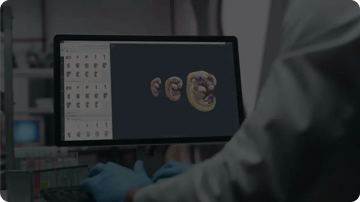Reimagining Medical Education: The Benefits of Self-Directed Learning
Introduction
Medical education has traditionally followed a structured, instructor-led approach, with students attending lectures, participating in clinical rotations, and adhering to a predefined curriculum. While this method has its merits, there is a growing recognition of the advantages of self-directed learning (SDL) in medical education. SDL empowers students to take charge of their learning, explore their interests, and develop essential skills that extend far beyond the classroom. In this blog post, we will delve into the numerous benefits of self-directed learning in medical education.
Enhanced Retention and Understanding of Medical Knowledge
A fundamental benefit of self-directed learning in medical education is the enhanced retention and understanding of medical knowledge. Traditional lectures often result in passive learning, where students passively absorb information without truly engaging with the material. In contrast, SDL encourages active learning, as students must seek out information, analyze it, and apply it to real-world scenarios.
Active Engagement: SDL requires students to actively engage with the material, whether through reading textbooks, conducting research, or participating in problem-based learning activities. This active engagement promotes a deeper understanding of the subject matter.
Personalization: SDL allows students to tailor their learning experiences to their unique learning styles and preferences. This personalization increases their ability to connect with and retain the information.
Application of Knowledge: SDL empowers students to apply their knowledge to practical situations, enhancing their ability to diagnose and treat patients effectively.
Improved Critical Thinking and Problem-Solving Skills
Critical thinking and problem-solving are essential skills for medical professionals. SDL fosters the development of these skills in several ways.
Complex Case Studies: Self-directed learners often delve into complex case studies, forcing them to analyze information, consider multiple perspectives, and develop effective solutions to medical challenges.
Research and Evaluation: SDL requires students to seek out information from various sources, critically evaluate the quality of evidence, and make informed decisions based on their findings.
Clinical Reasoning: Through SDL, students develop strong clinical reasoning skills, enabling them to make accurate diagnoses and treatment decisions in real clinical settings.
Development of Lifelong Learning Habits
Medicine is a constantly evolving field, with new research and technologies emerging regularly. SDL instills the habits of lifelong learning in medical students, preparing them for continuous professional development.
Self-Motivation: Self-directed learners are often more motivated to stay current in their field because they have developed a sense of ownership over their education.
Adaptability: As medical knowledge advances, SDL-trained individuals are better equipped to adapt to new information, technologies, and treatment modalities.
Continual Improvement: The ability to seek out new information and update one's knowledge is crucial for maintaining high standards of patient care.
Flexibility and Adaptability in the Medical Field
The medical field is known for its dynamic nature, with unexpected challenges and situations frequently arising. SDL equips medical students with the flexibility and adaptability needed to thrive in this ever-changing environment. This provides stronger patient outcomes while ensuring students have the confidence to think through various medical scenarios.
Problem-Solving Skills: Self-directed learners are adept at adapting to new situations and finding creative solutions to challenges they encounter in their medical practice.
Resourcefulness: SDL encourages individuals to be resourceful and find solutions independently, which is invaluable in scenarios where immediate guidance may not be available.
Self-Reflection: Self-directed learners often engage in self-assessment and reflection, allowing them to continuously improve their skills and adapt to changing circumstances in the medical field.
Conclusion
In conclusion, self-directed learning in medical education offers a plethora of benefits, including enhanced retention of knowledge, improved critical thinking and problem-solving skills, the development of lifelong learning habits, and increased flexibility and adaptability in the medical field. While traditional instructional methods certainly have their place, incorporating elements of SDL into medical education can empower students to become more effective, adaptable, and self-motivated healthcare professionals. As the medical field continues to evolve, embracing self-directed learning can help medical students and professionals stay at the forefront of healthcare innovation and provide the best possible care to patients.
More from the blog
View All Posts
Revolutionizing Embryology Education
Read More
Bridging the Nurse Skills Gap with Advanced Educational Tools
Read More
Advancing Nursing Excellence: A Milestone Collaboration between ANA and StatPearls
Read MoreGet The Demo


